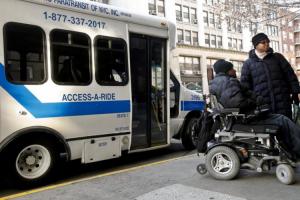Y – What is your name?
A- My name is Andrew V. Jogeeah
Y – What led you to LaGuardia?
A – When I was applying to colleges back in 2011, I didn’t get accepted to my first four choices, and I had seen LaGuardia Community College before since I lived in Astoria and decided to apply because of the convenient location and because my SAT scores were low.
Y – What was your major at the time?
A – I majored in Childhood Education and minored in English Literature.
Y – What drew you to this major?
A – I really enjoyed my time at my old elementary school and I felt it was a great experience for me as a child and a student. In addition to that, my fifth grade teacher was an inspiration to me and I wanted to be able to make a similar impact to students like he did.
Y – What made you not further pursue childhood education?
A – That shit was mad expensive bro. I had to maintain a double major taking 21 credit courseloads a semester in addition to having time open for internships so I could fulfill my requirements. On top of that, I would also have had to pay for teaching certification tests and further fingerprinting, which I had already done for my previous job and couldn’t use those fingerprints due to protocol. Having been working at the Writing Center at the same time, I decided to drop the double major and focus solely on English Literature and Creative Writing.
Y – What specifically drew you to the newer major of Creative Writing?
A – I’ve always had an interest in drawing, writing and reading because of video games and comic books and fantasized about making my own stories, comics and games. Ever since then, I’ve trained myself outside of school as these became my hobbies and wanted to sharpen my writing skills specifically since I felt that was lacking the most direction for me. I am quite confident in my ability of drawing, but if I had the money and opportunities, I would’ve loved to major in fine arts or studio art; it mostly boils down to a matter of money for me in the end.
Y – I understand that you work in the Writing Center. Do you draw on your experiences as a student to help other students at work?
A – I do. And yes, I often am able to sympathize with students and their assignments and struggles, which usually puts them at ease that what they’re feeling is surmountable and they can keep pushing forward even if they feel stuck because I made it on my own, but I’m here to help so that they don’t have to follow my same path.
Y – What do you do to get the most productivity out of a session with students?
A – Well, that’s unfortunately not always possible, but I basically try to get the gist of their assignment down at the very beginning of the assignment and try to identify what they’re struggling with. The sooner I get a feeling of those two aspects, the faster I can try and address the issues and try as many methods possible to help them get on the path they need to be with their writing. Sometimes this isn’t possible within an hour with a two people or even a single person, so I always encourage those students to come back for more sessions to help these most that I can.
Y – How far have you come from graduating at LaGuardia? How has your perception changed from being a student to becoming a member of the faculty?
A – I am pleased to say that I actually graduate from Hunter College in six days with my Bachelor’s Degree. I’ve come pretty far since attending LaGuardia, but I do miss it as a student; however, seeing it as a faculty member, I realize all the good I can do from what I’ve learned throughout my college career- as a student, as a LaGuardian, and now as a Writing Tutor.







